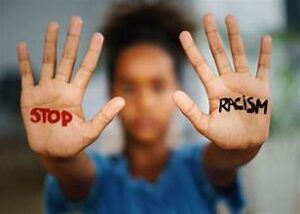Students who experienced racism said their mental health also deteriorated, a new study showed.
In 2023, nearly a third of high school students across the U.S. said they’d experienced racism in school, which Centers for Disease Control and Prevention researchers who published the findings defined as unfair treatment due to a person’s race or ethnicity. Students of color reported they’d had two to three times more racist experiences than white students who said they’d had.

These experiences resulted in students having more mental health issues and a greater risk of suicide and substance use than students who’d never had them. The findings amplify concerns among experts and officials about the youth mental health crisis, particularly with an increasingly nonwhite student population in the U.S.
School is “supposed to be an environment where they are supported in their growth and development” and “where all young people are treated equally,” Kathleen Ethier, director of CDC’s adolescent and school health division, told USA TODAY.
For young people who don’t have supportive school environments and face unfair treatment due to their race or ethnicity, Ethier said, “That is traumatizing, and it has implications for their mental health.”
CDC researchers drew from the nationwide Youth Risk Behavior Survey completed by public and private school students every two years in grades 9 through 12. The 2023 survey of more than 20,000 students listed a new question asking teens whether they had ever experienced racism perpetrated by students, educators or others. The study didn’t ask whether the interaction was with a peer or involved a school disciplinary policy, such as bans on traditionally Black hairstyles.
Asian students most likely to report experiencing racism in school
Asian students were the most likely to experience racism, nearly 57% reported incidents, followed by 49% of multiracial students and almost 46% of Black students. About 39% of Hispanic, 38% of American Indian and Alaska Native, and nearly 38% of Native Hawaiian and other Pacific Islander students said they experienced racism. Around 17% of white students described similar experiences. Among people of color, female and LGBTQ students were more likely to experience racism than their classmates.
James Huỳnh, an assistant professor at the University of Michigan School of Public Health, said the findings among Asian students align with existing research, especially during the COVID-19 pandemic when former President Donald Trump used xenophobic and racist language about the virus’s origins in China. Asian people subsequently experienced a series of high-profile attacks across the U.S., fueling a wave of fear in communities.
“We’re seeing the effects trickle down to students as well,” he said.
Young people who experienced racism during the pandemic had increasingly severe depression, Huỳnh said. These experiences also sometimes fueled anxiety and feelings of social isolation, he said.
The research didn’t distinguish whether the students attended schools with students from similar backgrounds. Experiences for an Asian student in California, which has had large Asian American communities for generations, may differ from those of children growing up in predominantly non-Asian or white communities elsewhere. “Because of that, the formation of their racial and ethnic identity can feel like it’s happening in isolation,” Huỳnh said.
‘School environment matters’
Overall, poor mental health, suicide risk and substance use were consistently higher among students who reported experiencing racism than among those who never had. Indigenous, Asian, Black, Hispanic and multiracial students who said they experienced racism also had persistent feelings of sadness or hopelessness, compared with compared with peers who didn’t. White students who had experienced racism also had feelings of sadness or hopelessness.
Students of color who said they experienced racism were two times more likely to say they had seriously considered or attempted suicide than students of color who had never felt such treatment.
Youth spend much of their time in school, where they make formative experiences, said Leslie Adams, an assistant professor at the Johns Hopkins University Bloomberg School of Public Health, who studies suicide.
“The school environment matters, particularly for mental health,” she told USA TODAY. “And it cultivates different feelings of belongingness, isolation and alienation.”
The findings from that one additional question mark a starting point for schools to think about connectedness and belonging for students, Adams said. Addressing racism in schools should also be treated with the same urgency as bullying, which has been shown to impact children’s mental health.
Schools should also work to adopt anti-racism policies for students and staff that address overt acts of bias and smaller slights in classrooms, Adams said. And students should have clear processes for report from their experiences and concerns.
–
This article was originally appeared on USA TODAY





